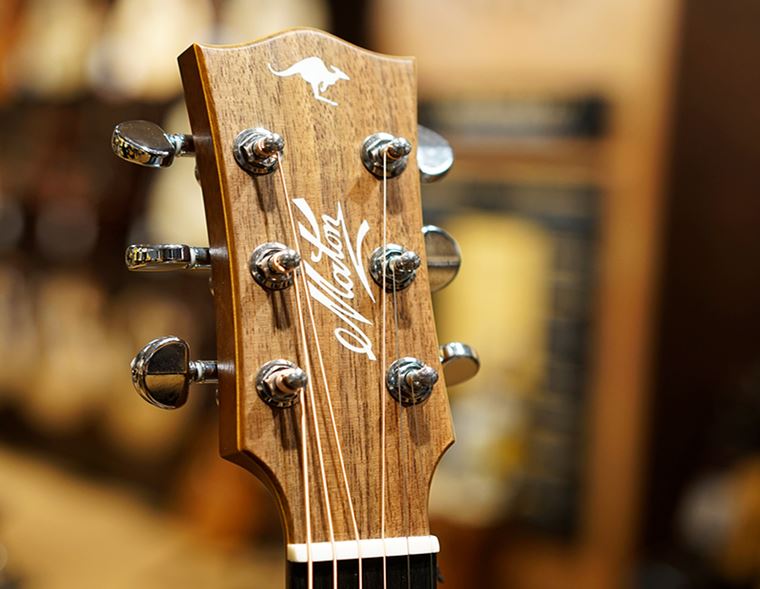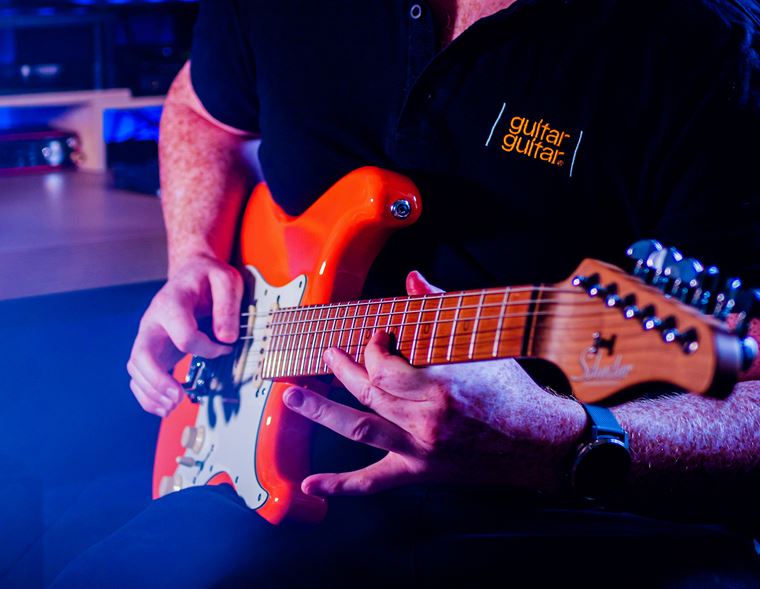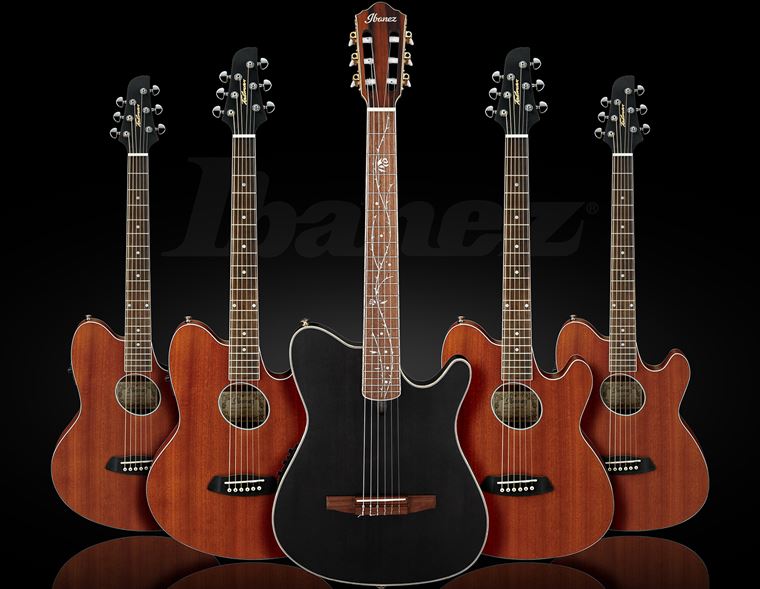Beginner Guide To Buying Your First Guitar (Updated for January 2025)
Published on 27 August 2024
The day has come: you're buying your first guitar - congratulations! This is a really exciting time for you, and an experience that we want you to enjoy and remember fondly as you continue your guitar journey. Today, we want to stand in your shoes and take the journey with you as you ask yourself "What guitar should I buy?"
We’ll go through all of the thoughts and options that are involved in selecting your first guitar, raising points and making decisions based on our own decades’ worth of experience.
Whether you’re after an electric guitar, an acoustic or a bass, we’re here for you, and we’ll make this journey as fun and easy as possible, ok? My name is Ray and I’ll be your guide on how to choose a guitar for beginners.
Contents
Here are the main points covered in this guide, in case you want to jump straight to a particular section.
- Choose What Type of Guitar You Want
- Making a Decision
- See What Style or Shape Stands Out to You
- Picking the Right Size Guitar for You
- Set a Budget
- Accessories You'll Need
- Buying New or Used?
- Best Brands for Beginner Guitars
Choose What Type of Guitar You Want
Ok, let’s begin our quest for a new guitar! Taking the first person perspective from here on in, the first question I ask myself is this: do I want to play acoustic guitar, electric guitar or bass? There are pros and cons to each choice, so let’s look at those right now. It’s worth noting that I’ll be making a distinction between ‘acoustic guitars’ and ‘classical guitars’ throughout this article. Acoustic guitars have steel strings and classical guitars have nylon strings. They are superficially similar but sound and feel different. Okay, onwards!
Electric Guitar Pros
- Strings are light are easy to play on
- Looks cool and fun
- Lots of sounds available, particularly via amplifier and effects use
- Probably the sounds you already listen to and enjoy
- Can be potentially used with headphones for quieter practice
Electric Guitar Cons
- More maintenance involved
- Extra equipment/accessories required (amp, guitar cable etc.)
- Doesn’t sound like much without an amplifier
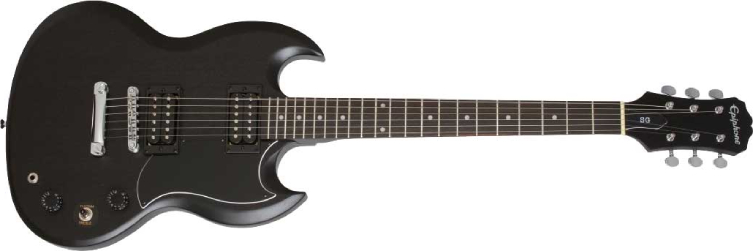
Acoustic Guitar Pros
- Amplifies itself, so no need for additional amp and cable
- Portable, works anywhere without requiring mains power
- Relatively straightforward to look after and maintain
Acoustic Guitar Cons
- Physically large/cumbersome compared to electric guitars
- Limited range of sounds available
- Minimum volume is still quite loud
- Generally tougher on fingers than electric guitars
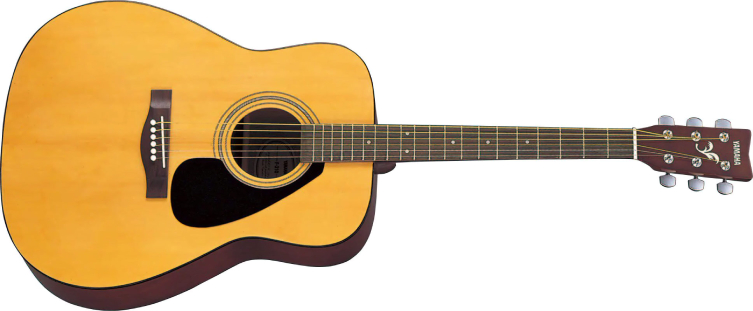
Classical Guitar Pros
- Relatively easy on the fingers compared with steel strings
- Pleasant sound
- Portable, requires no power so you can play anywhere
Classical Guitar Cons
- Generally very large necks so uncomfortable for beginners
- Specific sound: may not be what you are looking for
- Relatively limited in terms of tones
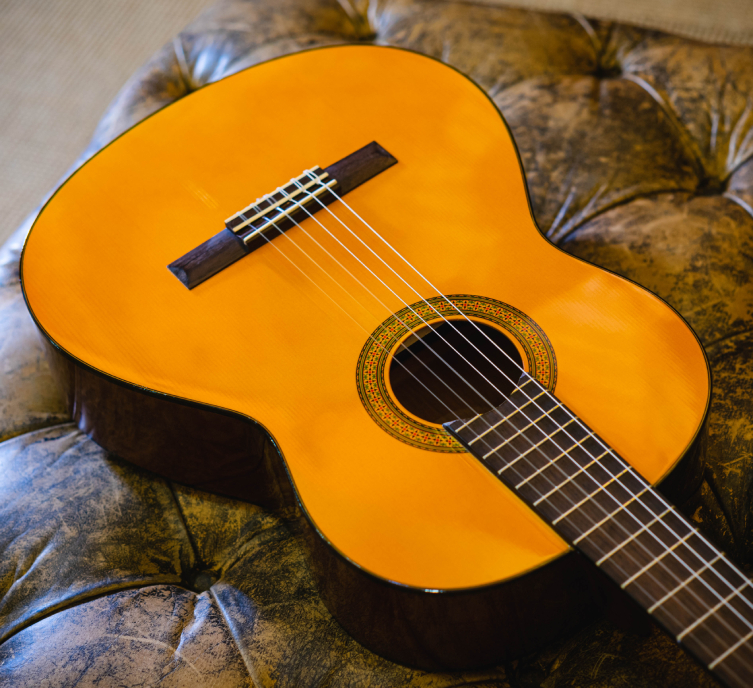
Bass Guitar Pros
- Relatively easy to get started on
- Very cool looking and fun
- Quick instrument to progress on
- Playing bass will make you popular with other musicians (everyone needs a bass player!)
Bass Guitar Cons
- Large: even short scale basses are large compared to electric guitars
- Fairly limited range since it is designed to be a supportive instrument
- Requires extra equipment such as amplifier, cable etc.
Making a Decision
These will be the main considerations for you as you consider which path to take. I would keep in mind the fact that this is a starting point, and you can use whatever you learn to switch across to another style at any point. In other words, if you spend a year playing electric guitar and then fancy trying the bass, everything you learned during that year will prove useful on the bass too, so it’s not wasted time!
Other things that would come to mind would include these thoughts: firstly, for example, I want to play songs from bands I like who come under metal and rock genres, so the classical guitar seems too ‘niche’ for what I want: I don’t listen to any music that uses a classical guitar, so it seems like a bad fit for me, personally.

For those reasons, my mind settles more clearly on the idea of either an electric guitar or a bass. Giving it some more thought, I decide to be honest with myself and admit that I want to play solos, strike rock poses and be a bit of a star. Whilst I can do that with a bass, what I really want is to be impressive on an electric guitar, so that seals the deal for me. I know I can always try bass later on, plus anything I learn on the electric guitar will still apply to acoustic and classical playing too.
See What Style or Shape Stands Out to You
So, I’ve decided that an electric guitar is the way to go for me, so I’ll look into the shapes for those first but I will return to the other guitar types too (acoustic, classical and bass), to see what’s happening shape-wise to all of those.
1. Electric Guitar Shapes: Pros and Cons
Electric guitars come in a wide range of shapes. The most popular is the one that’s based on the famous Fender Stratocaster. We call them S-types or S-styles when they aren’t made by Fender. This style is comfortable since it has contours in the body, and all of the controls are easy to access whether stood up or sat down. Generally speaking, I think this is the best shape for a beginner to choose: it feels good, looks good (everyone recognises this shape) and they generally also have lots of fun sounds and features.
That said, there’s a great deal of choice out there in terms of shapes, from V-shaped guitars (not the easiest to sit down with but it can be done) and other ‘pointy’ or ‘spiky’ shapes you’d associate with heavy metal styles, to more general (or at least less specific) shapes. Here’s a quick rundown of the main shapes, along with their pros and cons:
S-Type Pros:
- Sleek contours on the body make this comfortable to play and sit with
- You get full access to all of the frets on the neck (some shapes obscure this)
- The neck is usually nice and slim, so it’s easy to play
- Controls are close to where your right hand tends to sit, so easy access to them
- Generally not too heavy
- Often has a tremolo (whammy bar) which is a fun device for changing the pitch of a note
- Three single coil pickups give a glassy, twangy sound that is very famous
- Considered to be very versatile, able to play most musical styles
S-Type Cons:
- They are so popular than you might want something less obvious
- The closeness of the controls is a problem for some players (who accidentally hit them)
- Tremolo units are fun but create tuning hassles
- Not the best pick of you want to play heavier styles
There are S-styles from companies like Ibanez that address some of the downsides: for example, the guitar shown below, the GRX120SP, more spaced-out controls, and the pickups are built for heavier music. The shape is still an S-type, but as you see, it’s leaner and sharper looking than the more traditional S-type we’ve seen so far. This is an excellent choice.
T-style
The T-style is based on another Fender design, this time the Telecaster. This is the original electric guitar design and has a more characteristically ‘square-edged’ style. This is a very simple and very effective design that has lasted for over 70 years with no massive changes put in place, a sure sign of good design!
T-Style Pros
- Very simple and efficient: two pickups and simpler controls than the S-Type make this appealingly straightforward
- The sound is still twangy but has slightly more power than the S-type
- Timeless classic that is used for most styles of music
T-Style Cons
- Lack of contouring on the body can make these uncomfortable to some people
- Less pickups and controls than the S-Type means less available tones to use
Singlecut Pros
- Very comfortable
- Shorter neck (only slightly) means less string tension and therefore easier to play
- Big sound, very good for rock and heavy styles
- Lots of sustain for playing solos
Singlecut Cons
- Generally heavier in weight than other guitar styles
- Thick sound is slightly less versatile compared with other styles
- Often more expensive
Shape Guitars (V, Explorer, Warlock etc.) Pros
- Amazing looking, with lots of rock attitude
- Good for heavier styles
Shape Guitar Cons
- Often difficult to find gig bags and cases for the odder shapes
- Pointed tips of certain shapes get damaged very easily
- Not exactly subtle nor versatile
2. Acoustic Guitar Shapes: Pros and Cons
- Dreadnought: big and standard, good all-rounder, though maybe too large for smaller people
- Jumbo: largest size of acoustic, lots of volume and projection, though some people will struggle with the physical size
- Folk: smaller waist, slightly smaller overall. Suits fingerpicking styles well and good for smaller people. Less volume and projection than dreadnoughts and jumbos
- Parlour: Smaller again, more portable and ‘snug’ than other styles. Less volume, which is either a bad or a good thing depending on your plans!
3. Bass Guitar Shapes: Pros and Cons
- ‘P’ Bass Style: based on Fender Precision, this will suit all musical styles and is simple, often with only one pickup. Relatively large
- ‘J’ Bass Style: based on the Fender jazz bass, this offers more sound options due to two pickups, and often has a narrower neck. Still relatively large, but this and the P-bass are industry standards
- Short Scale bass: many other bass styles adopt a shorter scale length (30” from nut to bridge instead of 34”) and are easier to play as a result. Many Epiphone (based on Gibson) designs are like this, amongst other ‘alternative’ shapes
There are pros and cons to each shape, so we each must decide what works best for us. The good news here is that, whatever we decide on, there will be plenty of models to then pick from!
Picking the Right Size Guitar for You
This next section deals with size, and as the old proverb states, size matters! That said, it only matters in terms of what works for you. As a fully grown adult, I don’t need anything ½ sized or ¼ sized, but if I were buying for a child - particularly under the age of ten - then I’d definitely look into the different dimensions of some ½ sized guitars. These guitars have smaller bodies, shorter necks and are generally a lot more manageable than full-sized guitars.
Trying these out in advance is a particularly good idea, particularly when talking about acoustic and classical guitars, since their hollow bodies are an altogether chunkier proposition to address.
That aside, I’d also want to take into account things like shorter scale guitars and basses. These are not the same as ¾ size or half-size: they are full-sized guitars with a smaller length of playable string. We already noted that most singlecut guitars have a slightly shorter scale length (24.75” as opposed to the standard 25.5”) and this makes them more ‘slinky’ to play.

Acoustic guitars tend to come in a wide range of sizes and body thicknesses, so I would definitely want to test drive a selection, even if that just means sitting down with one after the other on my lap, seeing how well my right arm reaches over the body and so on. If any guitar proves uncomfortable, then it is not the one for me.
For basses, smaller people may prefer a short scale (30” instead of 34” from nut to bridge, so quite obviously different in feel), but everyone should try both a short scale and a regular scale bass, in order to understand the difference. Plenty of people use short scale basses because they prefer the feel, and not because the regular ones are too big!

So, in short, here’s a quick bullet-point list if the different sizes to be aware of:
- Full size: this one explains itself! 25.5” and 24.75” scale length guitars are still ‘full size’. Slightly shorter (some Fender guitars such as the Jaguar use a 24” scale length) is referred to as ‘short scale’ when talking about electric guitars.
- ¾ size: the scale length (playable distance of string from nut at headstock to bridge) is one quarter smaller than full size. The instrument’s body is usually a little smaller, too. ¾ size guitars are for smaller players to begin on and then progress to a full-sized guitar.
- ½ size: the scale length is half the length of a full sized guitar. The instrument’s body will be noticeably smaller, too. ½ scale guitars are definitely for smaller players, and will need to be upgraded to a larger size after a while.
- ¼ size: rare for guitars, though you’ll sometimes find classical guitars that are ¼ sized. These have a scale length that is three quarters smaller than a standard guitar, and are generally tuned to higher pitches to accommodate the significantly smaller size.
- Short Scale: on acoustic and electric guitars, generally anything less than 24.75” scale length, so travel guitars fall into this category too. For bass, a short scale is considered 30” or less, though the body size isn’t always smaller, so it’s not always too obvious to the eye.
Set a Budget
Now we come to price, and this is where I can only really guide you so far. Speaking frankly as a person who’s been in the industry for fifteen years and played guitar twice that long, I can honestly say that, no matter the price point, there is really no such thing as a ‘bad’ guitar any more. There are cheap guitars and expensive guitars (to say the least), but even the most affordable starter guitar is a good sight better than what was once available to beginners. Indeed, the difference between a mid priced guitar and a boutique-level guitar is also a lot less that it once was, so wherever you position your budget, you’ll be able to select an instrument that will serve its purpose well and last the distance.
Budgeting for an Electric Guitar
A guitar or bass costing under £150 will certainly give you a good start into guitar playing, but do remember that you’ll need extra accessories like an amplifier and so on to get going. We’ll look at all that in a second. When looking for a beginner electric guitar or bass, I’d be after something that worked for me looks-wise, since I’ll be more drawn to picking up a guitar that looks cool, and that’s half the battle in terms of progressing!
Have a browse around for what's available for the budget you've decided on - let’s say £200 for the sake of example - and round up some potentials. You'll then see what’s on the market for slightly over the price. Is it worth the extra spend to get a finish you particularly like? Or to get a guitar that looks more like something your hero uses? Conversely to that, does the extra money buy you features that you don’t really need right now? Decorative elements add to the cost of a guitar, so decisions have to be made about all of that.
The important takeaway here is that the reason some guitars cost more than others is partly due to more/better components & better timbers etc., but it’s also the time spent on making the guitar: complex electronics and intricate decorative detailing all takes time to achieve and time is money. In other words, a more expensive guitar isn’t automatically ‘better’ than a cheaper one, it’s just taken longer to make. Obviously, there’s a lot more to it than that, but this isn’t a situation where a £250 guitar is somehow better than a £200 guitar. A £400 guitar WILL be a whole lot nicer than a £150 one, though! Bear that in mind when you look at your options. If your total budget is £200, then go for a £99 (or thereabouts) guitar and spend the rest on the amp and accessories. The £99 guitar will be good enough to get you going.
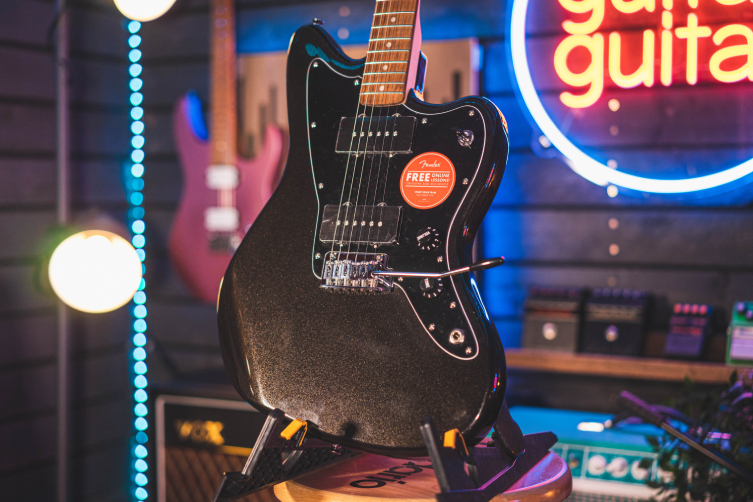
In terms of budget, I’d look to be able to spend as much as I can comfortably afford, because the extra cost will often mean nicer finishing, a smoother build (no jaggy fret ends for example) and better quality electronics under the hood.
One final tip before moving on to acoustics: be mindful of ‘active’ electronics. This applies more to basses than guitars at this level, but the industry in general is pretty bad at signposting this facet to fledgling players. Active electronics mean that the controls and sometimes pickups of a guitar or bass require a battery in order to work. There is normally a compartment on the instrument’s back, into which you insert a 9v PP3 battery (usually), which supplies the necessary juice to the circuit inside the guitar.
Most beginner instruments won’t have this type of circuitry, but we may as well cover it! Plugging your cable into the instrument effectively switches it on and starts draining the battery. Nobody tells you this, so as a beginner, you think your new instrument is faulty because it’s either sounding really weak or it’s not making a sound at all! So, keep an eye out for active electronics on any prospective guitar or bass, since they need a little more attention than passive instruments. How can you tell? Look for the battery compartment, or read through the instrument’s spec list on the gg website and look out for the word ‘active’!
Budgeting for an Acoustic Guitar
There are two things to consider when you're budgeting for an acoustic:
- The size of the guitar: full-size or half-size
- If you want a pickup system included (to plug the guitar into an acoustic amp)
As for the electronics, I’m going to give you my personal opinion from years of not only writing about guitars but selling them, too: don’t worry about them. Right now, you are beginning to learn to play, you are not gearing up for a summer of open mic nights and busking sessions! Hey, if you find an electro acoustic (the industry term for acoustic guitars made with pre-fitted acoustic pickup systems) that you love and want, then definitely go for it! Just don’t buy one thinking it’s something you need in an acoustic guitar. You can always have a pickup installed somewhere down the line, or just upgrade to a more professional model with a pickup fitted when the time comes. Right now, finding one you like the look, feel and sound of is key, and you’ll be spoiled for choice in the under £200 category. Big names like Yamaha and Fender operate in this category, so you’ll definitely find something great to get you playing.
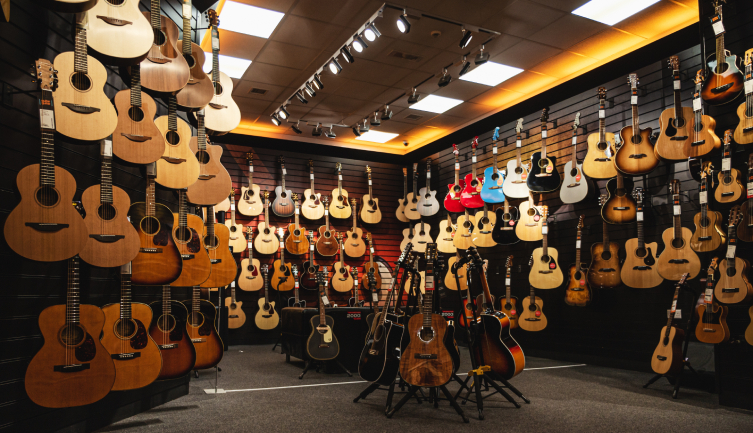
Accessories You'll Need
When it comes to accessories, we all need a tuner, a spare set of strings and some plectrums (picks), whether we’re going for an electric guitar, bass or acoustic guitar. I’d budget £30 for all of this (perhaps a tiny bit more for bass because their strings are dearer) and I’d look out for a headstock tuner, which attaches to my guitar’s head and senses the vibration of each string. It sounds fancy but it’s standard fare these days and they don’t cost much!
If I wanted to take my guitar outside with me, I’d need a guitar bag (also called gig bag) and those can be had for under £30. Just buy the correct size: you can get electric guitar bags, bass bags, acoustic bags and many more.
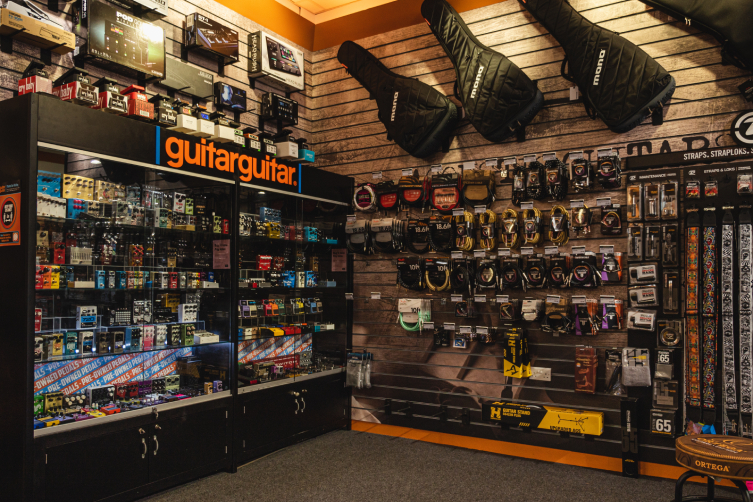
For electric guitars and basses, the main accessories would include an amplifier and a cable. I’d also want a strap so that I can stand up and play like a rockstar, rather than having to sit down all the time!
Amplifiers come in all shapes and sizes, but you don’t need to spend huge amounts at the beginning. What I’d make clear is the fact that basses need specific bass amps, so look to the bass amp section of the website for those.
Beginner amplifiers can be had for under £100, and I’d be looking for something relatively straightforward. Some slightly dearer models have loads of cool effects and sounds, so if I had the budget, I’d maybe look at a Line 6 Spider, Blackstar or BOSS amp, but if funds were tight, I’d be more than happy with an Orange CR or a Vox Pathfinder. These are legendary amp brands and it would feel cool to play through these. They sound good, none of them are particularly big and none need to be turned up loud.
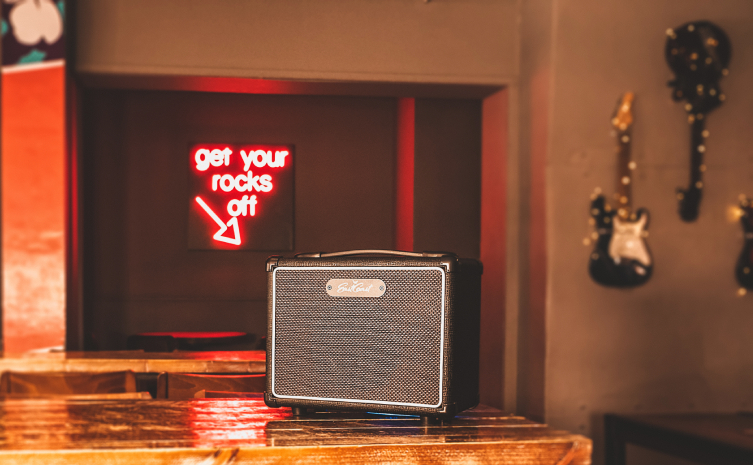
I’d also budget around £15 for a 10ft cable to use between the guitar/bass and amplifier. I don’t need a longer length for in the house, and by the time I’m heading out with my guitar to a rehearsal or performance, I’ll have bought a longer cable. I’d spend slightly up from the cheapest one available, because 9 times out of 10, any future sound problems will arise from a crackly, poor-quality cable.
In terms of plectrums, this subject is one of those ongoing experiments. Also known as picks, they come in a variety of shapes, thicknesses (thin, medium, heavy/extra heavy) and materials, all of which play some part in affecting how you play. Contrary to what many guitarists might like to tell you, there are absolutely no rules or conventions regarding what type of pick to use for a given style. People will talk about thicker picks giving you more control and thinner picks being better for strumming, but it’s all about the individual’s preference: what works for me may not end up being what works for you.
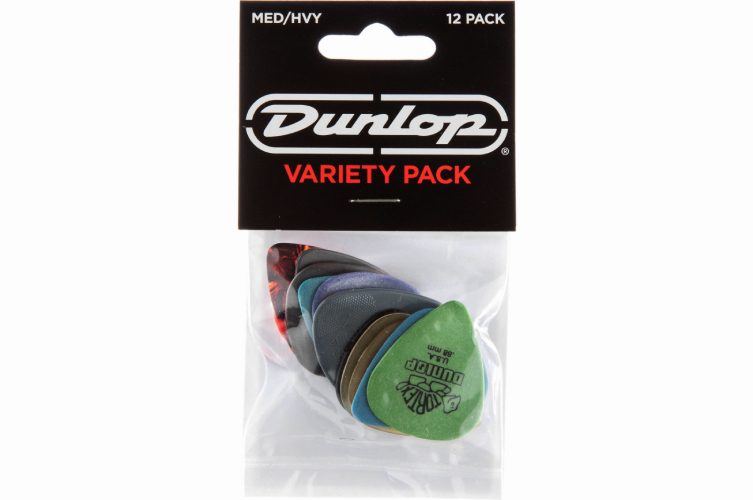
With respect to all other brands, Dunlop really own the market here, and so I’d buy a Dunlop variety pack and just spend time testing them all out. Once I know what I prefer, I can start replacing worn out picks with more of what I like.
Buying New or Used?
Should I buy a used guitar or a new one? There’s always the implication that I’ll get more value for money with a used guitar, but then there’s also the fear that there could be problems or issues with a second hand guitar: the previous owner may have mistreated it somehow and managed to conceal that from any subsequent buyers. There won’t be any warranty either, so if something isn’t right, you’re stuck!
Here’s some good news and some other good news. The first good news is, if you buy a used guitar frum us at guitarguitar, we check, clean and set up every single pre-owned guitar, so you can buy with full confidence. There will be no hidden uses, or we won’t have the instrument on a hanger for sale. The other good news is, we do actually offer a warranty on all used guitars! We’re here to sell stuff to you, yes of course, but we’re also here to look after you so that you visit us again and again in the future. If we treat you right to begin with, it sets in motion a good relationship that we hope will last a long time. We aren’t interested in selling you a faulty old guitar and then turning our backs on you.
So, if you want to consider a used guitar, then we’d support that idea, if you go to somebody like us. We’re not being ‘salesy’ here, it’s just that it can be the Wild West out there in the land of private guitar sales, so buying used from us at least gives you confidence and peace of mind.
Best Brands for Beginner Guitars
So, presuming that I’ve decided to go for a new guitar after all, what kind of brands should I be looking at?
I won’t detail every single model, since part of the fun is exploring for yourself, but here are some brands that are great for beginners:
- EastCoast: For excellent entry-level value, these guys put out good stuff and are at a great price. Electrics, basses and acoustics, all inspired by classic designs
- Yamaha: Well known in the industry for reliability, Yamaha are not the cheapest but some Pacificas are still very affordable and are famous as great student guitars
- Ibanez: Guitar giants Ibanez make instruments for world-renowned players but they haven’t forgotten beginners! Their entry-level guitars, basses and acoustics are all excellent purchases, and they have a cool mean ‘rock’ look
- Squier: Squier are the affordable younger sibling of Fender. Whilst some of their models are getting more and more expensive, it’s still possible to get great entry-level guitars and basses, all with those authentic Fender shapes
- Epiphone: Gibson’s affordable subbrand brings all of those famous Les Paul and SG guitar designs to a much more affordable market. High quality and can still be very pricey, but there are cheaper models too!
- Fender: Their electric guitars and basses are perhaps beyond beginner budgets, but their acoustic and classical guitars can be surprisingly affordable!
- Jackson: Fans of more metal-oriented styles may want to check out market leader Jackson. Their JS series displays excellent value for money and certainly look the part, whilst their downsized Minion series brings epic thrash guitar styles to pint-sized rock warriors!
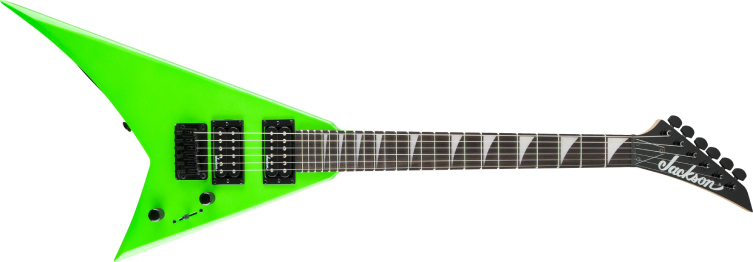
Q&A
We get asked lots of questions from beginners about how to choose their first guitar. Because of this, I’ve created this handy little Q&A to hopefully guide you down the correct path for YOU!
Is it worth buying an expensive guitar as a beginner?
Without sounding too much like a shop that’s trying to sell you something, buying an expensive guitar is a perfectly good idea for a beginner, should you so wish to. Here’s why:
- Expensive guitars hold their value better if the time comes to re-sell the guitar in the future.
- Expensive guitars are more comfortable to play.
- They will ‘perform’ better, in the sense that the tuning stability, electronics and controls will all be manufactured to a higher standard of quality.
- If it’s the one you love, you’re far more likely to reach for it and have a go than if you choose a guitar you’re not mad about. Actually picking it up for a play is half the battle in the early days!
- You’ll not need to upgrade since you’ll already own an excellent guitar.
Those are the ‘pros’, so it’s fair to now add some ‘cons’ too:
- Beginner guitars are better now than they’ve ever been, so you don’t have to pay a lot for a good instrument.
- Until you’re an experienced player, you may not appreciate or even notice the benefits that a more expensive guitar will bring you, so why buy one?
In the end, you should buy what feels right to you: your learning process will be largely the same either way.
Which guitar is best to start with?
The main consideration is whether to play acoustic or electric. Acoustic guitars (including both steel string types and nylon string classicals) do not require any additional equipment such as amplifiers, cables and so on, and so they can be carried around and played pretty much anywhere. The downside is that they are relatively loud, and are not quite as easy to play on as electric guitars.
Conversely, electric guitars are easy to play and lots of fun because you can dial in different sounds from the amplifier. You can also control the volume levels and indeed plug a set of headphones into the amp for silent practice. On the other hand, you need extra bits of equipment (amp, cable) because an unplugged electric guitar doesn’t make much of a sound!
If it were me, I’d go with a beginner’s electric guitar. Easier and more fun wins for me!
How do you know what guitar to buy for beginners?
Beginner electric guitars are generally the most affordable instruments you’ll find. They are actually often sold in bundles with extra accessories, giving you everything you need to begin.
In terms of what style of guitar to go for, I’d recommend visiting a guitarguitar store and trying out a few, even if you can’t play yet! Sit with them and see how they feel, check out their weight and so on. In all likelihood, one guitar will stand out to you more than the rest. That’s the one to go for!
Where should a beginner start with a guitar?
I believe it’s important to start learning music you like, and to slowly build up parts and sections of songs that already excite you. With guitar playing, the ending is never-ending, so it’s safe to just get some enjoyable riffs and melodies under your belt early on, even if you don’t quite understand the theory behind them. That will all come later when your skills, ability and ear all develop. The main thing is to find some parts - they needn’t be full songs - that excite you, and practise those.
What styles of guitar should I begin with?
When beginning, it’s important that you play styles of music that you actually enjoy hearing, otherwise it’ll be difficult to break through the initial learning stages.
Now, some styles are easier than others, and I expect that most beginners are turning to the guitars due to a love for rock or blues music, and luckily these styles of music are perfect to begin with. Whether you want to try chords or lead playing, classic rock, indie and blues styles will prove to be relatively manageable before too long!
The Journey is Just Beginning
Well, I think that’s all of the basics covered! Did I miss anything out that you need to know about? Thank you for taking this journey with me as I perused the various paths and alleyways of buying my first guitar. It was a long time ago for me, but I’ve helped many other players find their feet over my years of working for guitarguitar, so I hope my experience has translated into a useful guide for you.
If you have a guitarguitar store nearby, please do pay them a visit and chat to the staff. None of them will push a particular agenda on you, but all of them will want you to succeed in getting the right tools for the job you have in hand. It’s at the root of everything we do here, and we want you to leave the store feeling amazing and energised about playing the guitar.
If you aren’t close to any stores, you can still reach us via phone, email, live chat or social media, so if you have questions needing answering, there is definitely a way to get in touch.
Browse our site, sign up for emails and let us give you the benefit of our collective experience as you enter the world of guitar playing. Best of luck, and we’ll see you on the other side!








